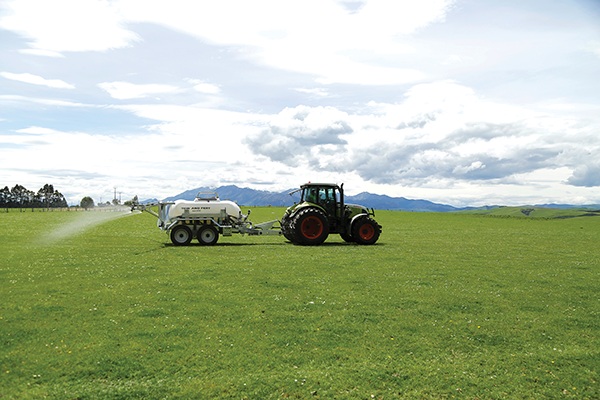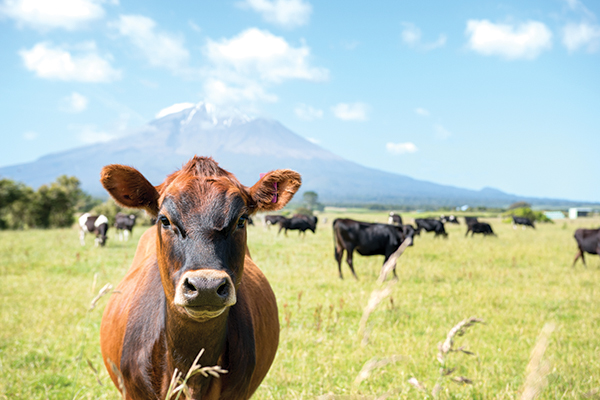AHV: Steering away from antibiotics
Constant use of antibiotics and the repetitive cases of severe udder health challenges have prompted a change in practice. Sheryl Haitana reports.

Waikato dairy farmer Brad Payne has been impressed with the AHV plant-based boluses he has used this year for udder health in a cold-turkey shift to reduce the need for heavy antibiotic use in his herd.
Brad is milking 600 cows just outside Cambridge. The herd is the third highest herd in the country, with a Breeding Worth of 386 and a 457 Production Worth. They implanted 900 embryos and had 300 contract matings last season and calved 150 cows per month from May to September.
Brad was concerned with his constant use of antibiotics and the repetitive cases of severe udder health challenges and wanted to make a change.
This year he stopped using antibiotics and started giving the cows regular probiotics, which enable the rumen to get more energy from the feed she eats, and used AHV (Animal Health Vision) boluses for early onset severe udder health challenge cases.
“We trialled 10 boluses the year before on some of the younger repeat offenders and had pretty good results. Six of the cows we have not had to administer again.”
Any cows with severe early onset udder health challenges this season were administered with three boluses, AHV Quick, AHV Extra and AHV Aspi, which are administered together in a triple bolus applicator.
The boluses support udder health by disrupting bacterial communication, breaking down biofilm and clearing up udders.
“If we get an early indication of a severe udder health challenge, using AHV, I can put her milk into the vat as there is no withholding period.”
“We’ve had a really good success rate with the boluses for severe udder health challenges. I haven’t had a cow that hasn’t come right yet.”
The number of severe udder health challenges for the season dropped from 200 to 38 with only 3 cows having a quarter dried off compared to 15 the year before.
“We don’t seem to be getting repeat offenders and it was very wet this season with the cows spending a lot of time on the feed pad. I’m excited to see what happens next year.”
Brad is spending less with the AHV Udder Health Program than he did on antibiotics, and that is not even factoring in the loss of milk out of the vat.
The somatic cell count has fluctuated between 150,000 and 220,000 which Brad has been happy with.
AHV NZ managing director Janneke Van Wagtendonk says unfavourable bacteria are like “hooligans waiting for the police to weaken”.
In an initial bacterial infiltration, bacteria invade the host and form a biofilm, which is a survival strategy for bacteria.
The biofilm protects the bacteria inside as it is impenetrable to antibiotics and immune cells (Felipe et al. 2017, Melchior et al. 2006).
When bacteria in biofilm “sense” immune suppression of the cow from external stressors or low energy, the bacteria break out of the biofilm and bacterial infiltrations re-occur.
AHV products disrupt the quorum sensing process between bacteria: block bacterial communication and break down the biofilm. This way, the cow’s own immune system can clear up the udder. The udder can be kept clear by proactive use of AHV udder solutions.
Clear udders result in more healthy cows, more milk, improved milk quality, improved fertility and ultimately increased longevity and profitability.
- Felipe, V., Morgante, C. A., Somale, P. S., Varroni, F., Zingaretti, M. L., Bachetti, R. A., Correa, S. G., & Porporatto, C. (2017). Evaluation of the biofilm forming ability and its associated genes in Staphylococcus species isolates from bovine mastitis in Argentinean dairy farms. Microbial Pathogenesis, 104, 278–286.
- Melchior, M., Fink-Gremmels, J., & Wim Gaastra. (2006). Comparative Assessment of the Antimicrobial Susceptibility of Staphylococcus aureus Isolates from Bovine Mastitis in Biofilm Versus Planktonic Culture. 53(7), 326–332.





